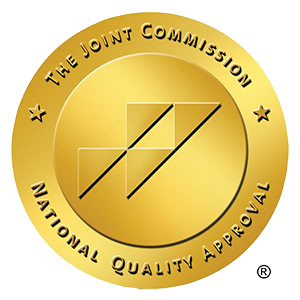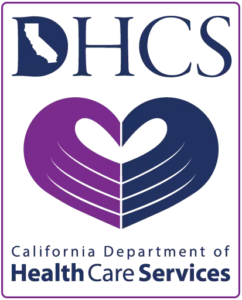
The opioid epidemic is sweeping the world, thanks in large part to the rise of fentanyl. Thus, knowing the signs of opioid overdose is more vital than ever. Your observations and consequential actions at the moment can make a difference in the world.
In light of opioid abuse’s monumental rise in recent years, the following insights reveal that the opioid epidemic is more than a worldwide crisis. It’s a personal one. Understanding the opioid epidemic reveals why it’s personalized and how you can temper the problem by reacting appropriately to the signs of opioid overdose.
Troubling Trends in United States Drug Overdose Deaths
There are several disturbing trends regarding the uptick in overdoses and deaths that require heightened communal awareness. Getting help from our compassionate treatment team can help you avoid being a statistic of the following drug overdose trends. Seeking professional detox in Huntington Beach is a crucial first step toward breaking free from the cycle of addiction and reclaiming your life.
The overdose problem was already prevalent before. Yet it has intensified in recent years, reportedly making a 500 percent jump in overdose numbers since 1999. Most of that uptick is attributed to fentanyl’s rise in recent years. You can help curb these statistics and overdose deaths by getting involved in community outreach programs in your area.
One recent statistic cites synthetic opioids as the cause of nearly 70 percent of all overdose deaths. Synthetic opioids are manmade either in a lab or in someone’s residence who has the proper materials. This means most drug overdose deaths involve synthetic opioids stemming from fentanyl use. Most dangerously, many of these manmade concoctions are not done by experts or professionals. This exacerbates synthetic drug dangers due to the unknown potency of most of these drugs.
Nearly 10 percent, or over 27 million people ages 12 and above, reportedly suffered from substance abuse problems in America. This number derives from a 2023 study conducted among US adolescents and adults. This is loosely reflective of the worldwide prevalence of the global addiction problem that desperately needs heightened community awareness efforts.
There’s a staggering discrepancy between 1999 and the current mortality rate of overdose deaths among African Americans, elevating nearly 250 percent during that span. These numbers are telling evidence that these ethnic groups are not receiving the treatment they need and deserve. In addition, Latino communities have seen an over 170% escalation in overdose deaths, while Native Americans have increased beyond 165% in mortality. All these numbers reflect increases between 1999 and 2022, revealing a disturbing disregard for communities that need assistance.
Polysubstance abuse is the illicit use of more than one drug simultaneously. Examples of this would include “speedballs” (a combination of cocaine and heroin), “methballs” (meth and heroine), and other similar polysubstance combinations. Correlatively, polysubstance-related deaths, most consisting of opioids, make up roughly half of all overdose deaths according to recent studies.

Signs of Opioid Overdose
An easy way to remember the common signs of an opioid overdose is to remember the acrostic “B.L.U.E”. Below is a brief elaboration of each letter signature to help you remember these common signs of opioid overdose.
Breathing
Opioids are a depressant, therefore, when the body has reached its peak, this has suppressive effects on the respiratory system. This means that in the event of an overdose, the subject experiences slowed breathing that can result in overdose-induced suffocation. For recollection’s sake, the “B.L.U.E” acrostic also represents the blue skin pigmentation that shows when one’s body lacks oxygen. Such is the case when one is experiencing an opioid overdose.
Lips
Purpling or blueing of the lips occurs before the rest of the body takes on blue pigmentation. When this occurs, it means the brain and other vital organs are being deprived of oxygen. Depending on the duration, oxygen deprivation can lead to brain damage, organ damage, or death. If you notice purple or blue lips, seek immediate emergency services.
Unresponsiveness
Any individual who is unresponsive to vocal or physical interaction may be experiencing an overdose. This means no shaking, yelling, or other efforts to wake them will arouse their consciousness. This occurs when the body slips into opioid abuse-induced unconsciousness that renders them incapable of asking for help. In these cases, immediately contact 911 as this is indicative of a life-threatening overdose circumstance.
Eyes
The eyes reveal so many truths, including the current state of our body’s health or safety. In the case of an overdose, any pinpoint pupil appearance is a telltale indication that an individual is experiencing the preliminary symptoms of an overdose. If you notice unusually small pupils, they may also be unaware of their circumstances. This is when it is most vital to act on their behalf and reach out to the appropriate authorities. In conclusion, the above symptoms, breathing, lips, unresponsiveness, and eyes, making up the acrostic “B.L.U.E,” are an easy memorandum method to help you be symptomatically aware.

Opioid Overdose Causes
Opioid overdose occurrences aren’t as simple as taking too much. Several factors contribute to the following causes of opioid overdoses.
Even if you use more minimal doses of opioids, mixing them with other drugs exacerbates opioid effects. As a result, these heightened opioid effects can lead to an overdose with potentially fatal consequences. This is especially the case with certain drug combinations that don’t mix well.
Since synthetic opioids are the most commonly abused drugs, their potency is most certainly unknown. Regardless of what the distributor may tell you, it’s almost impossible to fully gauge or accurately estimate these manmade concoctions. These unknown potency factors have largely contributed to overdoses and overdose-related deaths, even with the most minimal dosages. An added danger with synthetic make-up includes unknown toxins that are added to the original drug or potentially “laced” products.
The more you abuse drugs, the more tolerance you build up to these drugs. To counteract these tolerance levels, your body requires an increased dosage to produce the desired effects. The danger of these tolerance levels is that while your tolerance increases, overdose levels do not. That can result in accidental overdoses due to unusually high tolerance buildup. Don’t become a part of the statistics. Reach out to our caring representatives now to get the unparalleled treatment you deserve.
A primary reason people turn to drug addiction is to escape the toll of mental health problems. Therefore, many people suffering from substance abuse and depression simultaneously may intentionally indulge excessively, not caring about a fatal outcome. Thankfully, we provide unmatched individualized dual diagnosis treatment to help you heal from co-occurring substance and mental health disorders. Reach out to us to learn more about our life-changing therapy for co-occurring disorders.
How to Prevent Opioid Overdose?
There is imminent action you can take now to prevent an opioid overdose from occurring. Please note that all of the following overdose prevention techniques should be implemented with the aid of a certified specialist.
In over-the-counter prescription cases, adhering strictly to the recommended dosage is vital. As simple as this may sound, too many accidental overdoses occur due to failures to adhere to doctor recommendations. Make sure you stick directly to your doctor’s orders and carefully tend to the notated instructions on your medication.
As alluded to briefly in the introduction, all overdose prevention techniques should be taught and implemented by a rehab professional. Anybody struggling with addiction is at risk of an overdose. Thus, the most important step in preventing such a catastrophic event is to seek immediate help. Our caring receptionists are eagerly awaiting your call. Call us now to get the best quality rehab you could ask for.
Perhaps the most effective and important way to avoid overdose is to avoid circumstances and people that trigger your habit. This is another tool that a trained specialist will help you implement. They accomplish this by first identifying your triggers by getting to know you on a personal level. From there, they help you replace these negative indulgence triggers through specialized training.
Mixing medication or synthetic opioids with alcohol or any other substance has harmful consequences on your body. Even if you strictly adhere to recommended dosages, mixing it with other drugs exacerbates its effects to dangerously harmful levels. Make sure that if you must take opioids, stick with the standalone prescribed dose without adding other substances.
Opioids are a depressant, therefore, when the body has reached its peak, this has suppressive effects on the respiratory system. This means that in the event of an overdose, the subject experiences slowed breathing that can result in overdose-induced suffocation. For recollection’s sake, the “B.L.U.E” acrostic also represents the blue skin pigmentation that shows when one’s body lacks oxygen. Such is the case when one is experiencing an opioid overdose.
Surf City Detox is Leading the Charge of Lowering Overdose Rates
Surf City Detox in Huntington Beach, California, takes the disturbing trends in our country seriously. That’s why our care team devotes their wholehearted efforts to each patient’s sobriety. We treat each individual with personalized care and top-notch recovery efforts that every addiction sufferer deserves. We believe in a thorough process that helps you independently sustain your sobriety. Remove the cumbersome weight of opioid and substance struggles by reaching out to us today.

Dr. Eric Chaghouri is a 2007 graduate from the University of California, Los Angeles, where he earned his B. A. in Biology with Summa Cum Laude honors. While at UCLA, he helped the men’s varsity volleyball team earn a National Championship in 2006. He was named the UCLA Scholar-Athlete of the Year in 2007.
He earned his medical degree from the Keck School of Medicine in 2011. He completed his internship training in 2008 at Cedars-Sinai Medical Center and the remaining three years of residency in general adult psychiatry at the Los Angeles County and University of Southern California Medical Center. He served as the Chief Resident in psychiatric emergency services during his fourth year of residency. He also served as Resident Clinical Instructor and Volunteer Faculty in the Department of Psychiatry at the Keck School of Medicine.
After completing residency, Dr. Chaghouri accepted a fellowship position in forensic psychiatry at the prestigious USC Institute of Psychiatry and Law. His scholarly activities included publishing in Legal Digest and presenting research findings at the Keck School of Medicine annual conference.
Since completing his forensic psychiatry fellowship, he has established a successful and thriving practice in Southern California, focusing on treatment of co-occurring psychiatric and addictive disorders. He has developed a strong clinical team of practitioners who share similar goals and philosophies regarding psychiatric treatment, including providing cutting-edge interventional treatments for psychiatric conditions. He works in an array of capacities with attorneys, courts, and other parties in actual or potential litigation. He also has extensive experience consulting and providing opinions on psychiatric issues for major television networks. Dr. Chaghouri’s interests include addiction medicine, substance use disorders, forensic psychiatry, medical ethics, psychological autopsy, gender wellness, and evidence-based treatment of psychiatric conditions.



